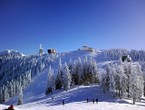Touristic Guide of Romania
English
Romania is integrating in the international touristic circuit and the diversity of the natural background, with the value of the historical monuments and arts , with an original and fully folklore. The main touristic zones from our country are: Black Sea's seacoast (Mamaia, Constanta, Eforie, Mangalia), the north of Moldova, Brasov zone - Prahova Valley, Danube Delta, Apuseni mountains, cities with a cultural-historic character: Bucharest, Iasi, Timisoara, like the balneoclimatic stations: Felix, Baile Herculane, Tusnad, Moneasa.
 The Danube Delta is a natural reservation famous in mondial plan for the beauty of her views this being an important touristic attranction. At the formation of it contribuit the actions of the sea, of the wind, and vegetation. The arms of Dunare includes many large and little rivers, drains connected one at each other or at the river. From the many species of fishes that fills the Dunare; the most famous are: the trout, the crap, the chub, pike, perch, pike perch, sturgeon, and the herrings in the houles of Dunare and in the sea.
The Danube Delta is a natural reservation famous in mondial plan for the beauty of her views this being an important touristic attranction. At the formation of it contribuit the actions of the sea, of the wind, and vegetation. The arms of Dunare includes many large and little rivers, drains connected one at each other or at the river. From the many species of fishes that fills the Dunare; the most famous are: the trout, the crap, the chub, pike, perch, pike perch, sturgeon, and the herrings in the houles of Dunare and in the sea.The Prahova Valley zone includes touristic stations famous on international plan like Sinaia, Predeal, Poiana Brasov, towns with a special touristic potential (Brasov, Sinaia, Busteni), montain views ,(Bucegi mountains, Piatra Craiului mountains) stations for winter sports and special architectonic monuments, the most important being The Peles Castle.
The north of Moldova hosted the most important churchdom monuments of feudal art like : Voronet monastery, Humor monastery, Dragomirna monastery, Sucevita monastery.
 Poiana Brasov, a resort rest and treatment season, in central south-eastern Romania (Brasov), in a glade surrounded by coniferous forests at the foot Massif Postavaru (Southern Carpathians), elevation 1,030 m, at 12 km south-west of Brasov that a road connecting a modern. Tonic mountain climate, with an annual average temperature of 5 ° C (average temperature in July is 14.5 ° C, the average temperature in January is -5 ° C) and rainfall exceeding 900 mm annually. The snow blanket lasts about 120 days a year.
Poiana Brasov, a resort rest and treatment season, in central south-eastern Romania (Brasov), in a glade surrounded by coniferous forests at the foot Massif Postavaru (Southern Carpathians), elevation 1,030 m, at 12 km south-west of Brasov that a road connecting a modern. Tonic mountain climate, with an annual average temperature of 5 ° C (average temperature in July is 14.5 ° C, the average temperature in January is -5 ° C) and rainfall exceeding 900 mm annually. The snow blanket lasts about 120 days a year. Coastline Romania. Each other main touristic regions have some specific elements : The Black Sea's seaside combines the heliomarine potential cure with other characteristics (landscape, climatic conditions, the beautiful seaside) ownes half of touristic accommodation capacity of the country. The main stations are : Mamaia (grandma), Navodari, Constanta, North Eforie, Techirghiol (with therapeutic mud), Costinesti, Olimp, Neptun, Jupiter, Aurora, Venus, Saturn, Mangalia, 2 Mai.
Coastline Romania. Each other main touristic regions have some specific elements : The Black Sea's seaside combines the heliomarine potential cure with other characteristics (landscape, climatic conditions, the beautiful seaside) ownes half of touristic accommodation capacity of the country. The main stations are : Mamaia (grandma), Navodari, Constanta, North Eforie, Techirghiol (with therapeutic mud), Costinesti, Olimp, Neptun, Jupiter, Aurora, Venus, Saturn, Mangalia, 2 Mai.Mamaia (grandma) is one of the symbolic stations of the Romanian sea coast. This is situated between Constanta place and the Navodari seacoast, being the station of the romanian seacoast with the highest number of tourists. Mamaia (grandma) station was open in the 1906's becoming the most important touristic destination for the tourists from Romania and not only.
 Situated 30 km from Brasov, between the Bucegi Mountains and Piatra Craiului, Bran Castle is an important national monument and benchmark tourism in Romania, due to both its beauty, landscape, as well as the Dracula legend, whose spirit still follow up these ancient places.
Situated 30 km from Brasov, between the Bucegi Mountains and Piatra Craiului, Bran Castle is an important national monument and benchmark tourism in Romania, due to both its beauty, landscape, as well as the Dracula legend, whose spirit still follow up these ancient places.The Agrotourisment is an important center of touristic atraction represented in a large and sophisticated palette: decorative textures, populat costume, wood and rock sculptures, bottle, wood or egg paintings, the wattles and, concomitantly popular music and the agile and well rhythmic romanian dances.
 Bucharest is the capital of Romania, an important political, economic, commercial, financial, cultural, tourist and one of the big cities of the world, administratively divided into six sectors. The city has been mentioned for the first time in 1459 and became the capital of Romania in 1862.
Bucharest is the capital of Romania, an important political, economic, commercial, financial, cultural, tourist and one of the big cities of the world, administratively divided into six sectors. The city has been mentioned for the first time in 1459 and became the capital of Romania in 1862.The Bucharest city is located in the south of the country , on the seasides of the Dambovita lake , it's the capital and the biggest town in the country , concomitantly being the cultural and guvernamental center, here is the most important institutions of the state. Bucharest from the number of the inhabitants point of view, is the 3rd city as size from the region.
 Sibiu is located in the southern part of Transylvania on the river Cibin and is situated at 45 ° 47 'north latitude (in line with Lyon) and 24 ° 05' east longitude (approximately in line with Athens). The altitude above sea level ranging from 415 meters to 431 meters in the Upper Town.
Sibiu is located in the southern part of Transylvania on the river Cibin and is situated at 45 ° 47 'north latitude (in line with Lyon) and 24 ° 05' east longitude (approximately in line with Athens). The altitude above sea level ranging from 415 meters to 431 meters in the Upper Town. The town can be considered good right cultural capital of Romania due to secular traditions and artistic heritage which the town and neighborhood area it owns. The town can be considered good right cultural capital of Romania due to secular traditions and artistic heritage which the town and neighborhood area it owns.
The medieval fortress town, left intact after two world wars and untouched by the communist regime, still preserves the spirit and atmosphere much apuse centuries. The neighborhood of town, of which mention the area of cultural indubitable value known as' Sibiu Surroundings', and the resort Paltinis, Fagaras mountains from Transfagarasan until the Olt Valley and the surrounding villages contribute to a greater extent and to reputation Sibiu as the most important tourist destination in Romania.



